
Vol. XXIV, No. 5, September 2024
- Editor's corner
- Premiumization, the next phase in leisure spending
- Attendance patterns for location-based entertainment venues
- How the immutable laws of marketing are changing the location-based entertainment industry
- Is a backlash against digital culture underway?
- Flavor-forward foods
- Topgolf's sales decline
- Important factors for deciding what experiences to spend money on
- Homebound: The long-term rise in Americans' time at home
- Sports activities now exceed pre-pandemic levels
Homebound: The long-term rise in Americans' time at home
The Covid era has accelerated a long-term trend of Americans spending more time at home. In 2023, Americans aged 15+ spent more time at home on a typical day than they did 17 years ago in 2006. On an average day in 2023, they spent 18 hours and 12 minutes at home compared to 16 hours and 36 minutes in 2006, an increase of one hour and 36 minutes. In 2023 people on average were spending more than one hour more time at home than in pre-pandemic 2019.
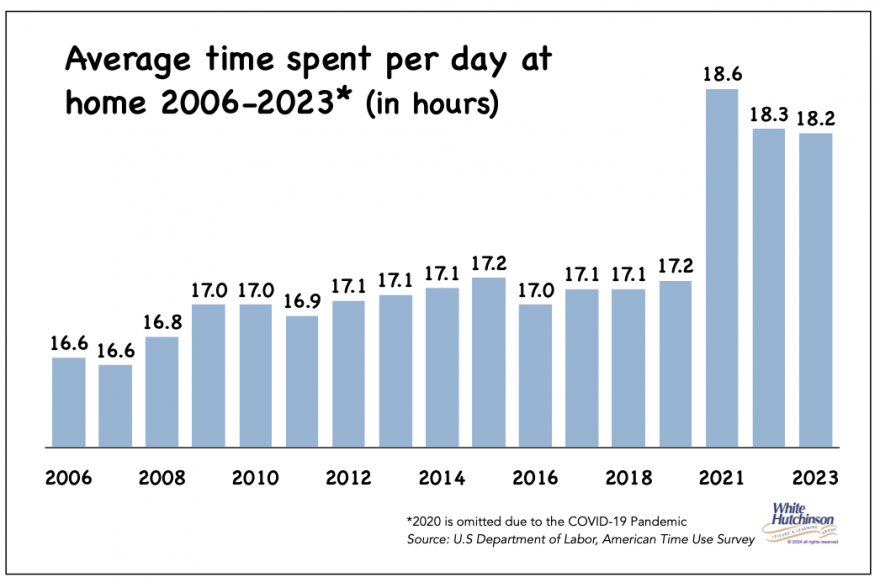
This chart shows the average increase to time at home for each year compared to 2006.
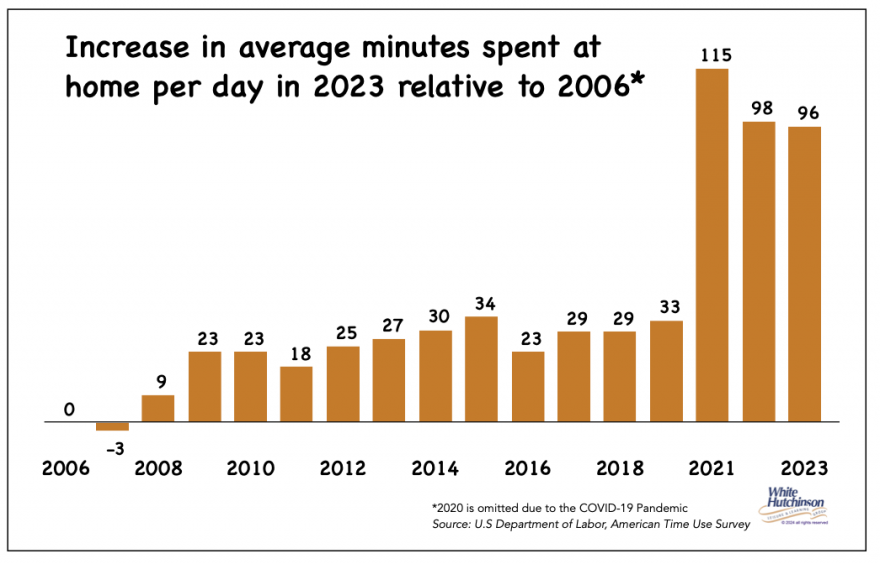
We dug into the data on the increase in work-at-home since the pandemic. No more than 25 minutes of the over one-hour increase of time at home between 2019 and 2023 can be attributed to the rise in work-at-home. That still leaves a significant increase in time athomein 2023 compared to 2019.
Ages 15 to 24 showed the greatest time increase at home since 2006 - 2 & 1/3 hours.
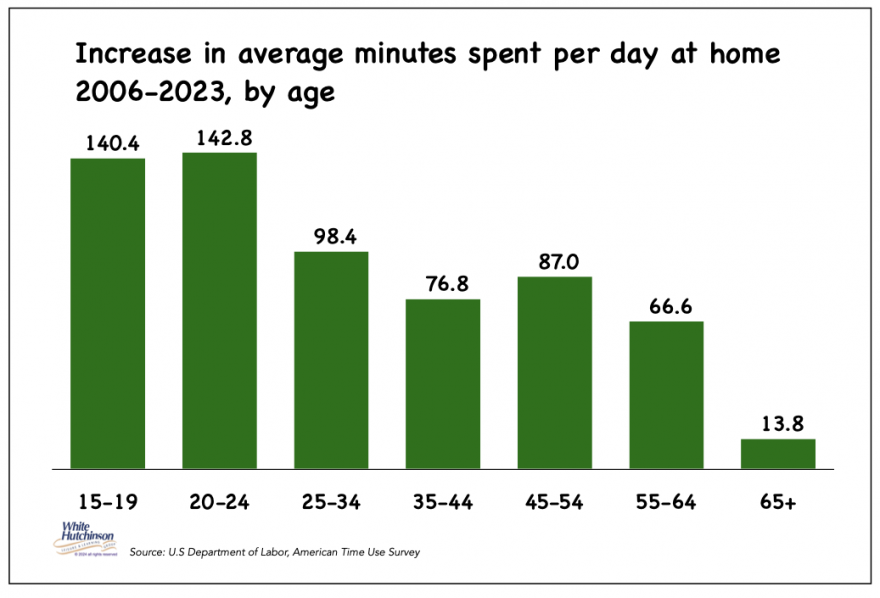
More time at home was spent alone and with family and less with friends.
The overall rise in time spent at home is due to a combination of a shift in activities and the location of activities. U.S. adults spent less time shopping for consumer items, socializing, volunteering, and traveling (including commuting and all transportation) in 2023 compared to 2006. These activities are more likely to take part outside the home, so the decline in time spent in each activity results in an overall drop in time spent outside the home. Alternatively, U.S. adults spent more time sleeping and using the computer for leisure in 2023 than in 2006. These activities are more common at home, resulting in increased time spent at home.
Over the 17 years, U.S. adults spent less time away from home and more time at home, engaged in all the following activities: working, taking part in education-related activities, eating and drinking, taking part in leisure without a computer, taking part in sports or exercise, and engaging in religious or spiritual activities. About 70% of the increase in time spent at home is explained by a shift in the location of just six different activities: work, school, eating/drinking, leisure without a computer, sports/exercise, and religious/spiritual activities. Roughly 20 minutes more leisure time without a computer was spent at home, while away-from-home leisure decreased by about the same amount.
A May 2024 research paper by Patrick Sharkey in Sociological Science found evidence that activities at home are associated with less happiness and viewed as less meaningful.
Could a decline in leisure time away from home be attributed to a decline in total leisure time? Surprisingly, over the 17 years, the average daily leisure time for ages 18+ has increased by only 3 minutes to 5 hours and 11 minutes in 2023. Compared to pre-pandemic 2019, it is down 14 minutes per day.
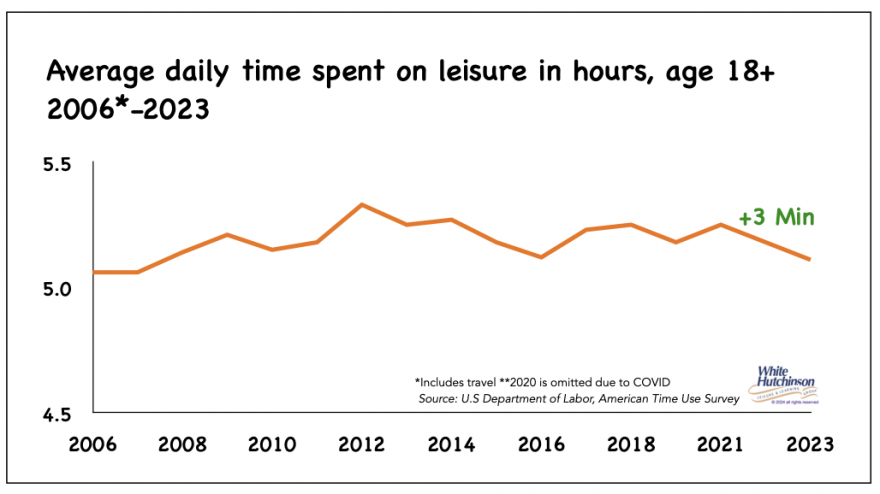
Ages 20-24 have seen the most significant fluctuation in daily leisure time, up 23 minutes from 2006 to 4 hours and 43 minutes in 2023. It is also up by 22 minutes since 2019.
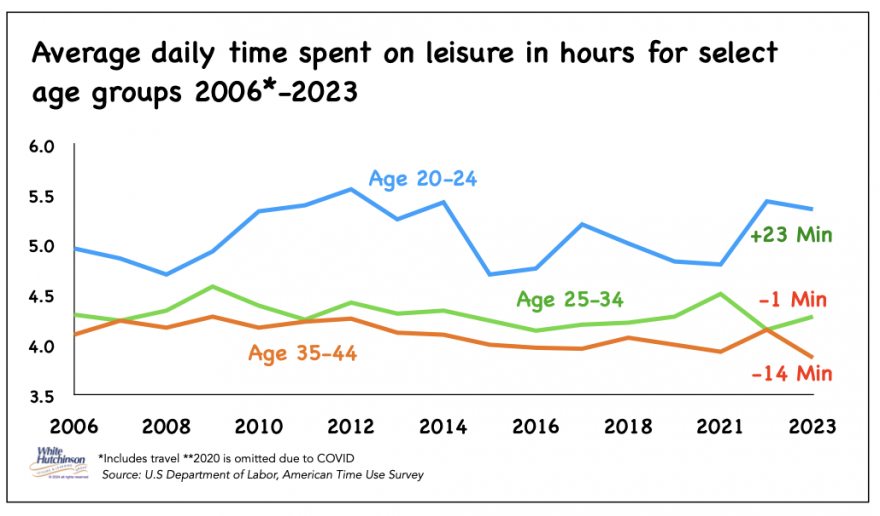
Take Away
The shift of leisure time to the home and less away from home increases the competitive landscape for away-of-home location-based entertainment (LBE), as it competes for discretionary spending and just as much for discretionary leisure time. With a smaller time away-from-home leisure pie, LBEs need to become even better to win over all the other away-from-home leisure options (also see premiumization and sports activity articles in this issue).
Subscribe to monthly Leisure eNewsletter
Vol. XXIV, No. 5, September 2024
- Editor's corner
- Premiumization, the next phase in leisure spending
- Attendance patterns for location-based entertainment venues
- How the immutable laws of marketing are changing the location-based entertainment industry
- Is a backlash against digital culture underway?
- Flavor-forward foods
- Topgolf's sales decline
- Important factors for deciding what experiences to spend money on
- Homebound: The long-term rise in Americans' time at home
- Sports activities now exceed pre-pandemic levels


